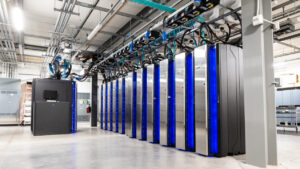
Weather forecasting is a challenging and fascinating aspect of meteorology. An accurate forecast requires a thorough knowledge of all the variables of the atmosphere. There are also conservation principles of momentum, mass, energy and moisture, combined with the ideal gas law from chemistry that forecasters must consider.
The physical principles are represented as equations, and with current weather conditions, are used to solve for variables meteorologists care about — wind, temperature and precipitation. Computers are used in numerical weather prediction to solve these mathematical models to predict the weather based on current weather conditions.
A numerical forecast is only as accurate as the observations that go into the forecast at the beginning of its model run, referred to as “initial conditions.” Weather moves from one place to another rapidly; tomorrow’s weather is influenced by today’s weather far upstream. For this reason, forecasters must have lots of data worldwide. Large data storage enables better model initiation.
The National Weather Service uses supercomputers to produce weather forecasts, watches, warnings and a whole host of data for the public. These computers run sophisticated computer programs, called numerical models, to create forecasts used by the private sector and the public.
The U.S. Department of Commerce and the National Oceanic and Atmospheric Administration, or NOAA, have recently expanded the capacity of their Weather and Climate Operational Supercomputing System by 20%. The increased computing power and data storage helps improve weather prediction.
The supercomputing capacity supporting NOAA’s new operational prediction and research enables about 42 quadrillion operations per second. This faster computing allows NOAA to run more complex forecast models, while increased storage space enables more data to be used and assimilated into the system. The increased computing power and storage will help to improve weather forecasts for years to come and enable weather prediction advances.
Steve Ackerman and Jonathan Martin, professors in the UW-Madison department of atmospheric and oceanic sciences, are guests on WHA radio (970 AM) at 11:45 a.m. the last Monday of each month. Send them your questions at stevea@ssec.wisc.edu or jemarti1@wisc.edu

